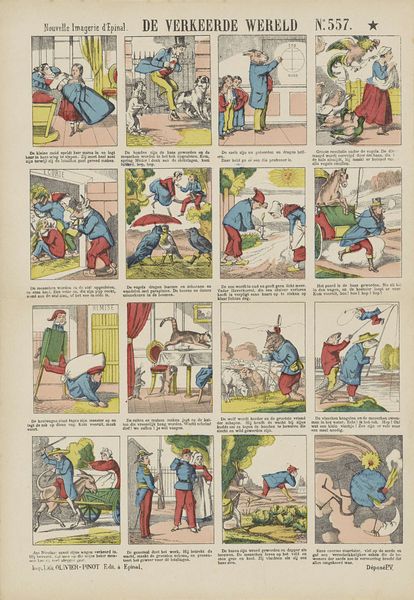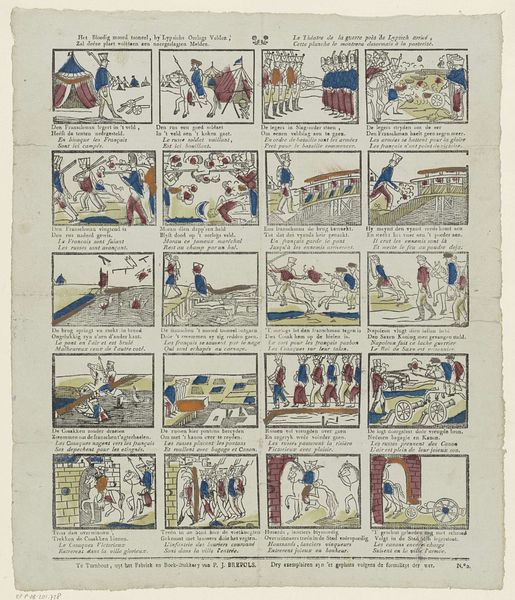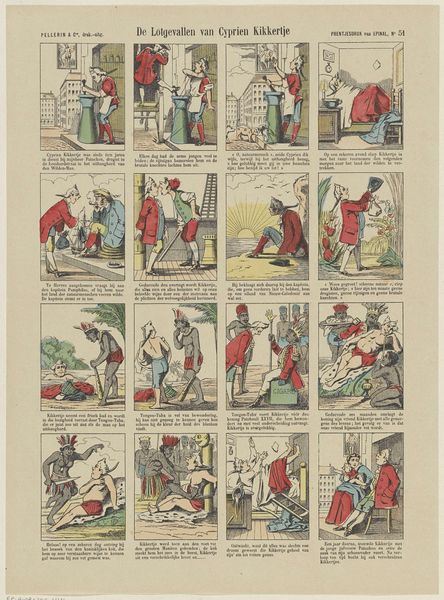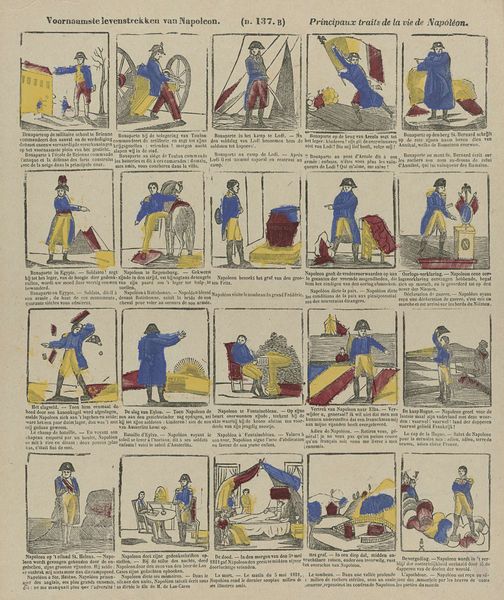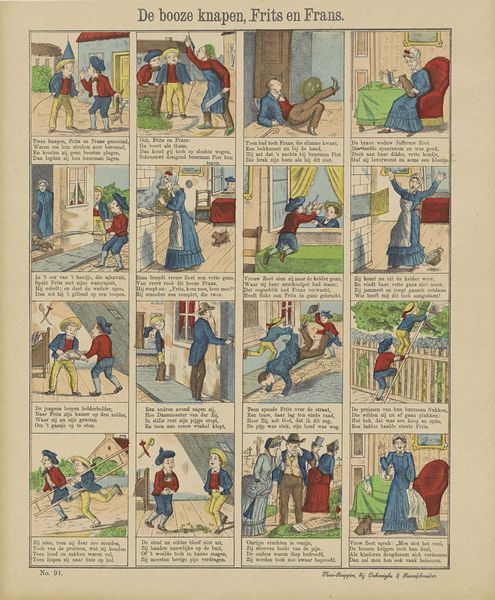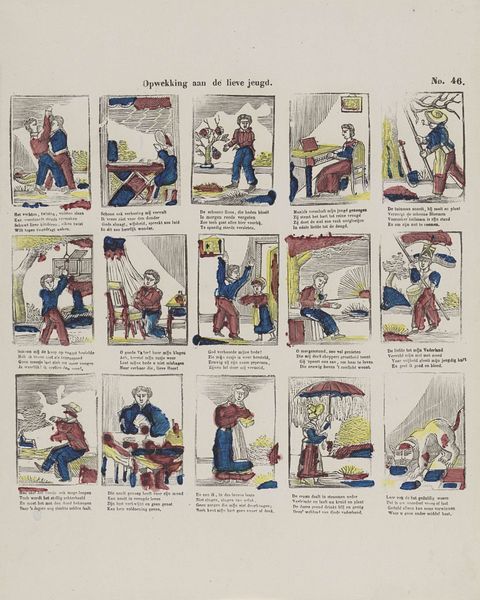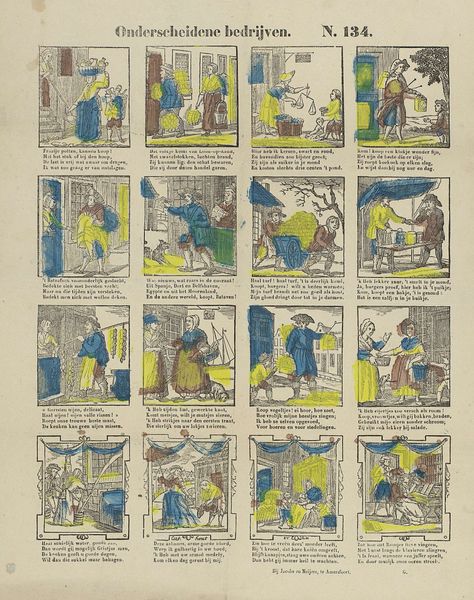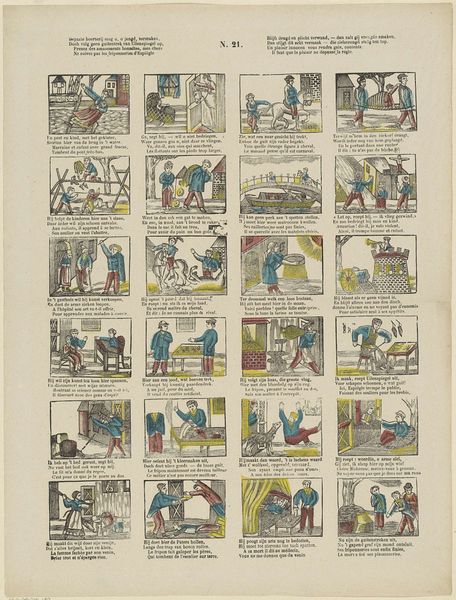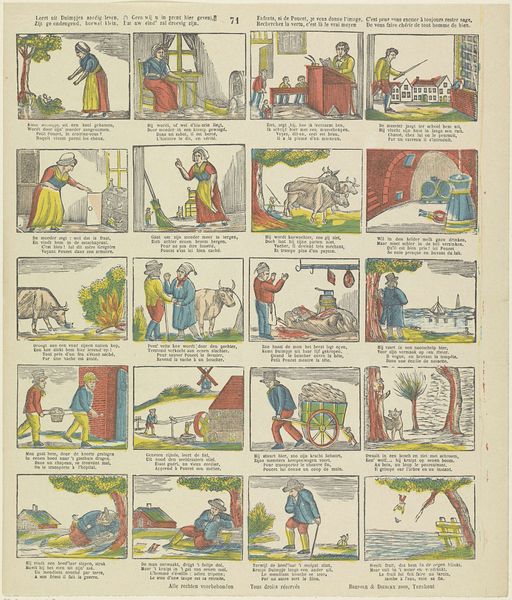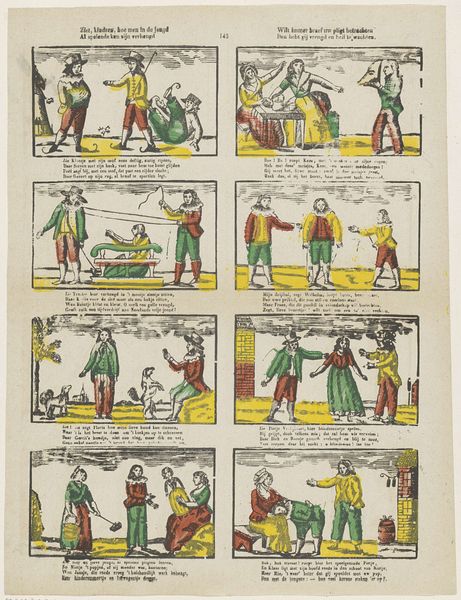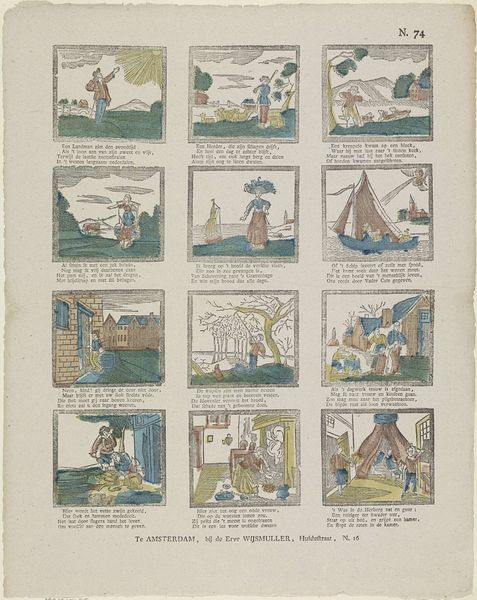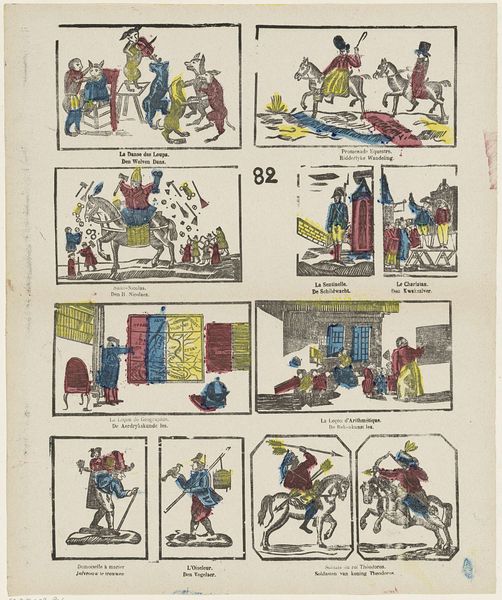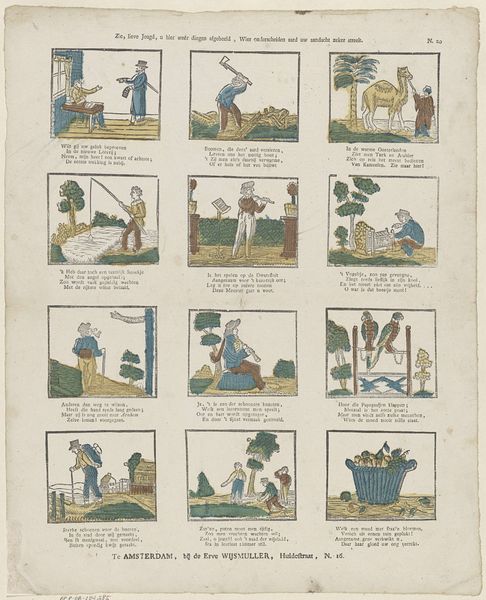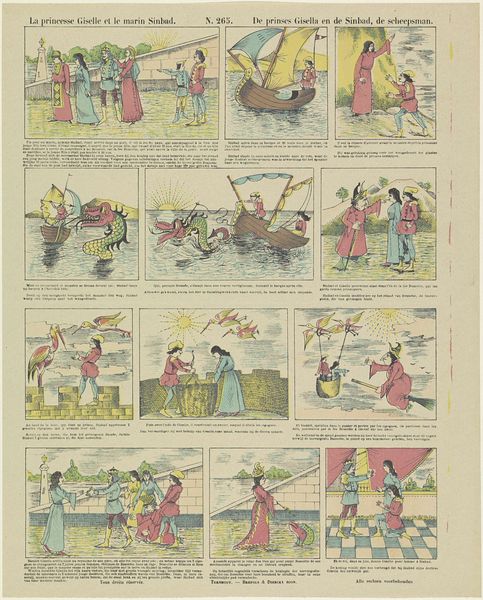![Kinderen! hier ziet gij Van Speijk's leven, daden en dood [(...)] by Philippus Jacobus Brepols](/_next/image?url=https%3A%2F%2Fd2w8kbdekdi1gv.cloudfront.net%2FeyJidWNrZXQiOiAiYXJ0ZXJhLWltYWdlcy1idWNrZXQiLCAia2V5IjogImFydHdvcmtzLzk0YzRlYzExLWZmYmEtNGZiOC1iYjAxLTVkN2FhMmZjMjExYi85NGM0ZWMxMS1mZmJhLTRmYjgtYmIwMS01ZDdhYTJmYzIxMWJfZnVsbC5qcGciLCAiZWRpdHMiOiB7InJlc2l6ZSI6IHsid2lkdGgiOiAxOTIwLCAiaGVpZ2h0IjogMTkyMCwgImZpdCI6ICJpbnNpZGUifX19&w=3840&q=75)
Kinderen! hier ziet gij Van Speijk's leven, daden en dood [(...)] 1800 - 1833
0:00
0:00
print, engraving
#
comic strip sketch
#
narrative-art
#
dutch-golden-age
# print
#
comic
#
history-painting
#
engraving
Dimensions: height 427 mm, width 332 mm
Copyright: Rijks Museum: Open Domain
Curator: Here we have a fascinating print from between 1800 and 1833 by Philippus Jacobus Brepols, currently residing here at the Rijksmuseum. It’s titled “Kinderen! hier ziet gij Van Speijk’s leven, daden en dood,” which translates to "Children! Here you see Van Speijk's life, deeds and death.” Editor: It strikes me as rather sad, even cartoonish in its presentation of what I assume are momentous events. The muted colors contribute to a feeling of something lost, perhaps the innocence of childhood itself, confronted with a tragic tale. Curator: The print uses a comic strip format to recount the life and, crucially, the death of Jan van Speijk, a Dutch naval hero. His act of blowing up his own ship rather than surrendering it to Belgian insurgents in 1831 became a potent symbol of Dutch national identity. Editor: Right, so the imagery then, becomes central to its interpretation. Look at the sequence depicting the explosion – chaotic fragments rendered in basic shapes and colors. Even the Dutch flag seems torn and fractured, a powerful emblem of the turmoil and sacrifice at the heart of this story. How interesting that a supposedly heroic narrative feels so ambivalent. Curator: Precisely. The context is crucial. It emerged during a period of nation-building, designed to instill patriotic values. Van Speijk’s self-sacrifice was elevated and strategically employed to construct a very specific, arguably propagandistic, national narrative for children. Editor: The child looking at the final portrait confirms this! Van Speijk is presented like a saint’s relic or icon, as if the contemplation of his image will grant entry into Dutch cultural values and memory. It’s cleverly layered; a story teaching children how to view the story. Curator: The limited color palette is also interesting, drawing heavily on blues and reds, symbolic of the Dutch flag and therefore, the nation itself. It emphasizes the core message of national pride, possibly at the cost of critical thinking or a nuanced understanding of the sociopolitical situation. Editor: Thinking of how images shape our understanding of heroism and national identity—this piece forces us to ask difficult questions. Curator: I agree, looking at how a deliberately designed, seemingly straightforward artwork becomes a vessel for deeper, more complex national identity narratives.
Comments
No comments
Be the first to comment and join the conversation on the ultimate creative platform.
